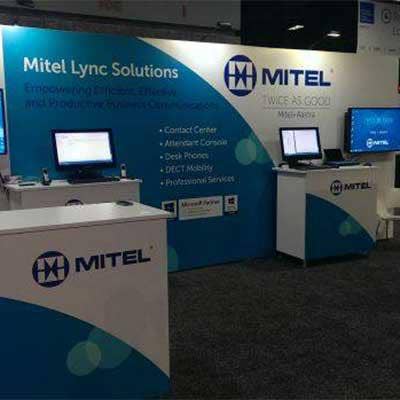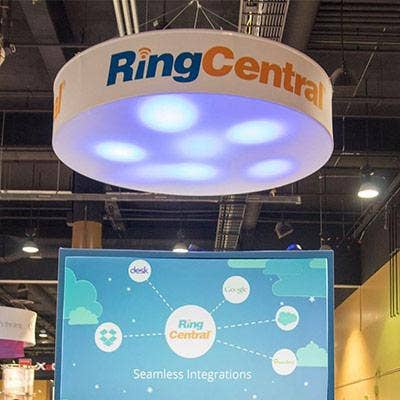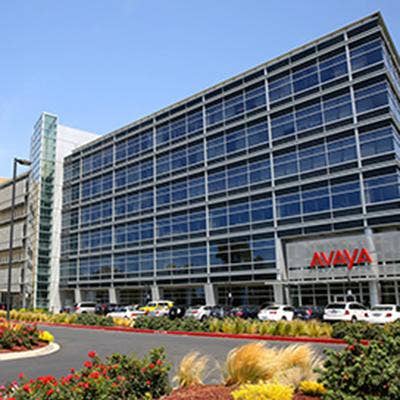RingCentral CEO Scoffs At Mitel-ShoreTel Acquisition; Talks Winning Over Top Avaya Partners And $1B Sales Goal

The UCaaS Market Leader
RingCentral CEO and founder Vlad Shmunis has led his company to become the market leader in the fast-growing Unified Communications as a Service space with nearly 20 percent revenue share.
The Belmont, Calif.-based UCaaS leader reported in August that revenue jumped 30 percent year over year to $120 million during its recent second fiscal quarter, while winning seven new $1 million or larger deals, four of which that came through channel partners.
In an interview with CRN, Shmunis weighs in on Mitel's recent acquisition of ShoreTel, why Avaya partners and customers are flocking to RingCentral, the company's technology roadmap and goal of reaching $1 billion in sales by 2020.

Mitel said its acquisition of ShoreTel would create the No. 2 player in the UCaaS industry. Do you think that's true?
It's interesting that they say they're now the No. 2 player because we don't really see them out there. If we do, we replace them as on-prem legacy providers. Their cloud solutions are not well received. From Mitel, we never even see them as a cloud provider. I'm not entirely sure what exactly do they in terms of their cloud solution. ShoreTel we see a little of, but very minor. It does not seem to be, from my perspective, like one-plus-one equals three here. It seems like two legacy providers who are running out of market share.

Why aren't you concerned about a combined Mitel-ShoreTel competitor?
Remember, all of the on-prem UC is going down in the high-single digits, and all of UCaaS is going up. RingCentral is growing twice the rate of UCaaS and UCaaS is growing in the high-teens. They're just running out of space. So it's nice for them to say, 'Okay, we're going to be No. 2.' Fine, but it doesn't make their platform or go-to-market or channel any stronger. They have thousands of resellers already and – look – neither company was growing, so it's not about that. It's about the product, and they don’t have a good product.
An example of that is, one of the seven-figures deals we won through our channel was with a customer with 500 offices in 17 states; they were on a legacy ShoreTel system. We won over that [customer].

Partners said ShoreTel has a Communications Platform as a Service (CPaaS) solution that RingCentral doesn't. What are your views on CPaaS?
We haven't heard that ShoreTel has CPaaS. We weren't aware. Our take on CPaaS is, we have an open platform and we're the only vendor out there with a scaled-up UCaaS platform which is also open; it has open APIs that allow our customers to build custom applications and workflows based on our platform. We have hundreds of applications in the app store. We have thousands of developers who are using our APIs and it's growing very rapidly quarter-over-quarter.

So RingCentral is taking a different approach?
Yes. So the approach we have is we follow the Salesforce model of enabling our recurring revenue customers with using the full power of the platform by allowing them to write custom applications that use our data. This is a little different from how some other people defined CPaaS … One thing I want to point out is that gross margins are much lower with that CPaaS business model. They struggle to hit 50 percent. I think Vonage's [CPaaS] Nexmo is still under 40 percent. So it's not just not a very attractive business.

Have you've seen an uptick in Avaya customers coming to RingCentral since it filed for bankruptcy this year?
Yes. Absolutely. We've been replacing both Cisco and Avaya boxes for quite some time now, at least a few years, as we got to be enterprise ready. We use to replace more Cisco than Avaya just because Cisco is a larger provider out there, but more recently after Avaya's bankruptcy, we for the first time are replacing more Avaya and Cisco. It doesn’t mean we're replacing less Cisco than we used too, it's just that we're replacing more Avaya.

Give me an example of a RingCentral won over an Avaya customer?
Some of our larger wins, we just announced a new international retailer – a 5,000-user deal – that was an Avaya replacement. We've announced our Hyatt deal – that was an Avaya replacement.
In fairness, those cycles started before the Avaya bankruptcy, but most certainly things have accelerated. People see the writing on the wall. It's not clear what Avaya's longevity is and even when they do emerge from bankruptcy – it doesn’t make them a valuable competitor. They still don’t have a cloud solution.

Are you seeing Avaya channel partners jumping ship to RingCentral?
On the channel side, we've seen this as a wake-up call. There's a lot of partners who've built businesses on reselling Avaya. And it wasn't that they didn't know there would be changes in the future and the cloud was coming, but we were able to sign up three very large resellers this quarter with many more in the pipeline. Not that they're never going to sell Avaya again, but they definitely needed a cloud solution in their bag. Some of the success we're seeing – some very large wins – are from these resellers.

How has RingCentral become the market leader in UCaaS? What's your differentiation?
We believe that we fundamentally win because of the strength of the product. That's been a strategic investment for us since day one. My background is technical, the initial team here was all technical. We do have the best product in the market today which is extremely differentiated with an open platform that the competition does not have with collaboration and team messaging via our Glip product. We also offer best in class SaaS contact center in partnership with InContact, as well as best in class video conferencing in partnership with Zoom. There's no one out there that has this combination of features and functionality, all of which are tailored made for larger enterprises.

Talk about channel momentum over the past 12 months?
As we're moving up market into the enterprise segment, we have seen a very strong pick up from the reseller community that has really been contributing and supercharging our growth there. Case in point, we announced seven, seven-digit total contract value deals during our earnings call on Aug. 2. Four of those deals were sourced through the channel. A good product breeds good partners and good partners get us into good accounts. As we get into those accounts, we get to tweak the product to make it even more palatable for larger and larger enterprise.

Is the channel playing a bigger role for RingCentral in 2017 compared to a year ago?
It's no accident that four of those seven large deals came through the channel. The channel is now around 85 percent of all our indirect sales overall, versus 40 percent a year ago … Our indirect sales started out as carrier-based, so initially, we did not have the channel at all. Channel now makes up 85 percent. The indirect business going forward will be dominated by the channel.
So the channel is absolutely taking over for us. We expect to continue signing major Avaya resellers. We just signed up three more that were [Avaya] Platinum or Diamond level people. These are significant wins in their own right. We expect the channel to play a larger and larger role.

What is your technology roadmap for growth?
Our growth hinges on our ability to innovating and out innovating our competition – that's truly a core belief. A big part of it is continuing to widen the lead specifically in the UCaaS space, which is basically PBX in the cloud. We already made major inroads there. None of this would happen if we didn't have product already capability of replacing a large-scale Avaya [deployment]. We continue improving usability there and enhancing availability. We continue investing in the robustness of our security and into instant failover. We're improving administrative capabilities for very large accounts -- where talking thousands and tens-of-thousands [of users].

Are you looking to innovate on the contact center side?
Absolutely. So we're partnering with InContact who are leading in their segment as we are in ours. You put two leaders together, and customers just love that. There is more that we can do with more seamless integration. Also, we're beginning to provide some of the contact center functions for smaller contact centers at this point, but it's on our own platform. Our latest announcement of Live Reports is the first step in that direction. There's going to be an ongoing effort for us as we onboard more and more of that functionality ourselves.

Why do you think you can reach $1 billion in revenues by 2020?
The market is huge. It is easily in excess of $50 billion, though some analyst have it closer to $100 billion. If you look at reports, yes, we are the leader in UCaaS with almost 20 percent share, but UCaaS as a whole is probably under 10 percent of the total installed base. Meaning the remaining 90 percent are still locked-up with Cisco and Ayava and the long tail of Mitel and ShoreTel and people like that. There are well over 100 million users out there still tied to a PBX of some type.

Is there a need anymore to buy on-premise solutions?
Our core belief is that all of this will eventually go to the cloud. There's no reason to have an on-premise solution. Just like Salesforce has demonstrated, there's no reason to have an on-prem CRM solution anymore – just look at what they were able to do.

Why should your partners be pumped about RingCentral?
We are currently the largest and the fastest growing UCaaS player in the world. We have now for the first time validation of just how much of a breakaway we are at this time with almost 20 percent share in a rapidly growing market. We're also happy to see that we are now almost twice the size of our nearest competitor and growing at twice the rate. The gap will only be increasing. We're able to do that while being profitable and with expanding margins.

What's your message to the channel community?
It's still very, very early in this market overall. There's still so much opportunity in moving more than 100 million users that are still tied to conventional on-prem PBX to the cloud. The channel plays such a vital role here and will continue playing here.